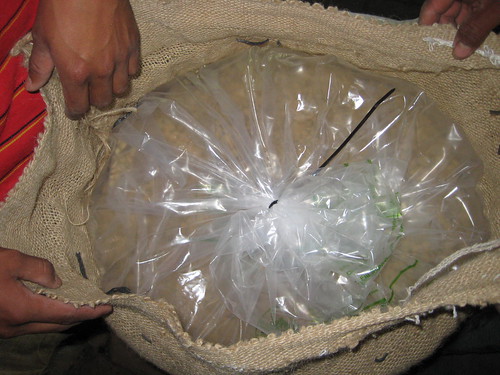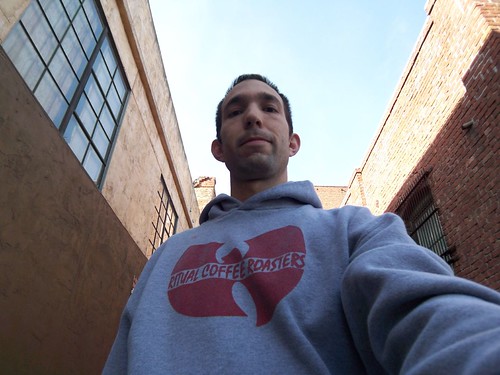Right now, there is a lot of navel gazing going on in the blogs about what brew methods are best, what to do now that the clamour for Clover turned into the planet buster on the death star....
A lot of people are talking about moving to the manual methods or anything new that's less automated. Siphon, pourover bars, and getting back to basics are becoming the buzz words. I think it's just a movement in trying to find a new niche, the new amazing brewer that will give them the angle. Specializing and definite product differentiation from the big boys. I am proud there are some serious cats out there brewing vac with all the tedium and technical precision of a guitarist mid solo but they are the few among a mob of new found fans of the manual method.
The times are changing and nothing is settled right now. There are no firm standards and we have no clear direction where things will be in the next year. It was not too long ago that I believe we were in the dark ages of coffee on the verge of change. Sure the forums were buzzing and 3wavers were aplenty working for 'the goal', but it was a time with a lot of passion and very little substance. Vac sealing was something only eccentrics did and few would publicly admit how much coffees deteriorate much less think about freezing a coffee.
The focus was on the equipment mods, ritual movements in preparation, and all about these name brand 'black box' blends. The forums were left to the machinations of latte artists proclaiming the value of triple rosettas and pacman blowing flames in your cup AND gratuitous photo series of 'naked' portafilter triple thick one ounce muddy baked 'chocolate' shots. Sure, there was an interesting segment focused on how to hack some cheapy piece of equipment into some better cheapy piece of equipment.... but eventually, you PID your PID and it becomes redundant so you end up buying the best equipment after spending lots of cash on a series of small modded upgrades.
Somewhere along the way, a lot of focus on the actual coffees was lost. Sure, I realize everyone is 'about letting the coffee speak for itself' and other catchy phrases but a little less time on forums talking about the concept and more time living it would help us all.
It's all the more complicated these days by marketing that is geared at direct trade and relationships where the farmer as a brand is glorified on one hand and on the other often then repackaged in mill marks where the farmer disappears again. Transparency is a funny thing we all talk about but don't really ever see or have the access to understand.
Then there are coffees where the placement in contests or prices paid set notoriety and it can simply be a contest to pay the highest price for the right to pay the highest price AND then you have press and buzz based on expensive brewing equipment and 20K utterly superfluous heating elements clouding the picture of what is really good coffee and what is just an expensive lamp making cheap coffee at a high price.
So, if you can clear through the fair trade, organic trade, direct trade, bidding wars, ego trips, pricey brewers, complicated techniques, barista flair, and well, everything but cup taste to well... simply cup taste, that's an amazing moment of clarity.
Things haven't really changed that much but I am thoroughly excited by splintering segments of the industry headed in new directions. The point is, there are great things going on in coffee BUT you have to dig deep and often the people doing the most amazing bits don't spend time cruising coffeed or CG, they are out there doing it. Marketing rarely cuts through to the tiny elements that can help make or break a good coffee.




